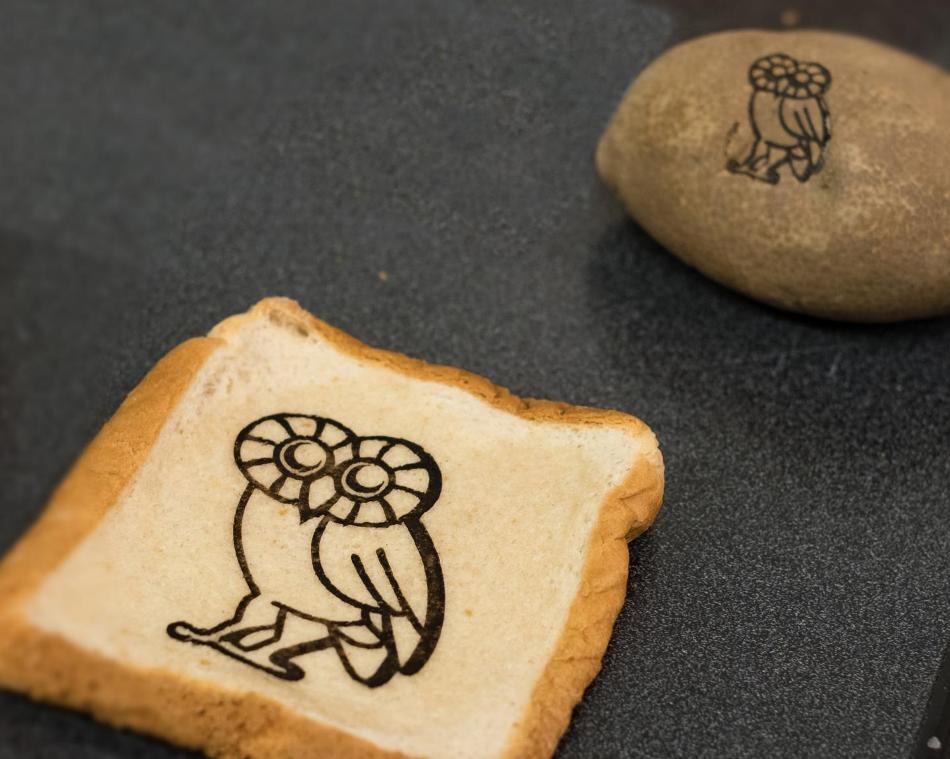Mar 1 2018
 A new laser technique that “writes” graphene onto toasted bread, potatoes, and other foods could lead to the development of edible electronics. CREDIT: Jeff Fitlow/Rice University.
A new laser technique that “writes” graphene onto toasted bread, potatoes, and other foods could lead to the development of edible electronics. CREDIT: Jeff Fitlow/Rice University.
Very soon, electronics—the driving force of the contemporary world—could be part of one’s everyday diet. In a research published in ACS Nano, researchers have described a technique for writing graphene patterns onto practically any surface, such as even food.
According to the researchers, the new method could be a foundation for edible electronics with the potential to trace the progression of foods from farm to dining table, and also to detect hazardous organisms that could lead to gastric distress.
In graphene, a single layer of carbon atoms is arranged in a honeycomb form. It has a thickness less than that of human hair, strength greater than that of steel, and conductivity more than that of copper, rendering it to be the best-suited elementary unit for next-generation smart, compact electronics. Many years earlier, James M. Tour and his team heated the surface of an inexpensive plastic by using a laser in air to synthesize a substance called laser-induced graphene, or LIG, which is a foam formed of tiny cross-linked graphene flakes. The method could be used to implant or burn patterns that can be used as radio frequency identification (RFID) antennas, supercapacitors, or biological sensors. Depending upon these outcomes, the scientists postulated that any substance with an acceptable quantity of carbon can be transformed into graphene. In order to investigate this postulate, Tour and his colleagues decided to burn LIG onto cardboard, food, and various other day-to-day, carbon-based materials.
A single laser pulse was used by the scientists to transform the surface layer of the target substance into a disordered collection of atoms known as amorphous carbon, which is generally called as black soot. Subsequently, they performed multiple laser passes using a defocused beam to transform the soot into graphene. Upon defocusing the laser beam, the team was able to hasten the transformation process. In contrast to LIG processes followed earlier, the graphene transformations performed in these experiments were carried out at room temperature and did not mandate a box with controlled atmosphere. On the whole, the process showed that it is possible to burn LIG onto cloth, paper, potatoes, cardboard, toasted bread, coal, coconuts, and other foods. According to the scientists, these outcomes indicate that food items could, in the due course, be tagged with RFID antennas formed of LIG, which will assist in tracking the origin of a food, the storage time of the food, and the way it reached the table. Moreover, they propose that LIG sensors can be used to detect Escherichia coli and other detrimental organisms skulking in meats, salads, and other food materials.
Funding from the U.S. Air Force Office of Scientific Research and the United States-Israel Binational Science Foundation is acknowledged by the authors.